- Joined
- Feb 2, 2011
- Messages
- 2,339
ARMIES AND ENEMIES OF THE NEW KINGDOM EGYPTIANS
The New Kingdom, is the period in ancient Egyptian history between the sixteenth century BC and the eleventh century BC. It was Egypt’s most prosperous time and marked the peak of its power.
It is also known as the “Ramesside period”, named after the eleven pharaohs who took the name Ramesses, after Ramesses I, the founder of the nineteenth Dynasty.
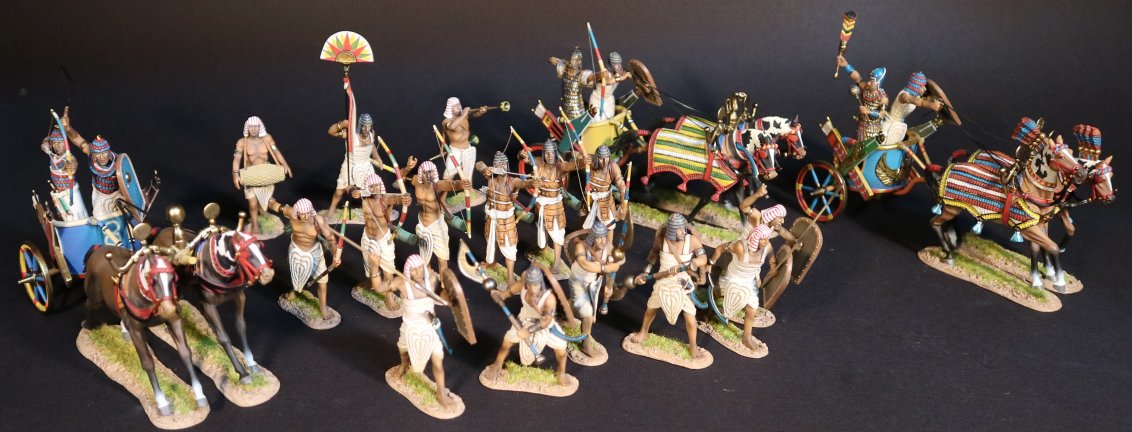
The Egyptians were experts in the use of massed archery.
The infantry was usually divided into two. The archers by now were equipped with the newer composite bow, and would be deployed in linear formation. When faced with lightly protected troops such as the Libyans, massed volleys alone were frequently sufficient to effect the necessary level of destruction.
Archers were an important part of an Egyptian army. They were not generally expected to close with the enemy which is evident by their general lack of body armour.
Against more heavily armed and protected infantry the archers would be employed to deliver heavy covering fire for the close combat infantry known as Nakhtu-aa or “the strong arm boys”.
These would advance rapidly, discharging their spears in the process before closing with an enemy already softened up by the supporting fire of the archers, and attacking with their bronze khopesh swords or long mace axes.
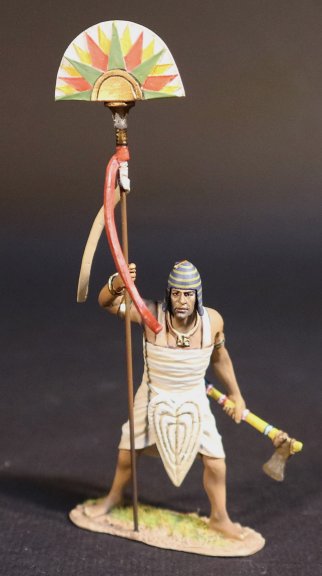
NKE-06A
THE ANCIENTS,
NEW KINGDOM EGYPTIANS,
THE BATTLE OF KADESH 1274BC,
EGYPTIAN STANDARD BEARER
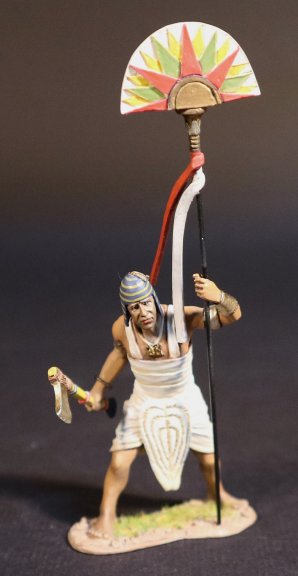
NKE-06B
THE ANCIENTS,
NEW KINGDOM EGYPTIANS,
THE BATTLE OF KADESH 1274BC,
EGYPTIAN STANDARD BEARER
NUBIAN AND LIBYAN MERCENARIES
During the 20th Dynasty Egyptian power declined, and Egypt itself was beset with Libyan incursions and attempted invasions by the sea peoples.

The Libyans were originally composed of two peoples namely the Tehenu and the Temehu. These were later joined by tribes called the Kehek and Meshwesh, the latter being the most notable of all the Libyan tribes.
These peoples never did well against the Egyptians due mainly to their lack of chariots, and were no match for the Egyptians at this time.
The first Libyan War in 1193 BC, Pharaoh Rameses III of the 20th Dynasty fought a mixed army of Libyans and Sea Peoples, which were led by King Themer. The invaders were beaten back with over 12,000 killed and 1,000 taken prisoner.
Libyans wore animal hide cloaks and had dyed ostrich feathers in their hair.
Many Libyans who raided Egypt during the reigns of Merenptah and Ramesses III were captured and impressed as auxiliary troops in the Egyptian army. Ramesses III’s battle scenes illustrate many Libyans armed with bows, as well as long slashing swords traded from the sea peoples.
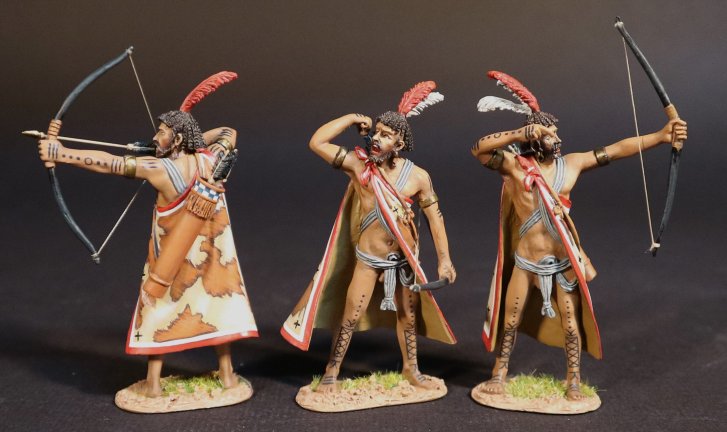
NKE-20
THE ANCIENTS,
NEW KINGDOM EGYPTIANS,
THE BATTLE OF KADESH 1274BC,
LIBYAN MERCENARIES
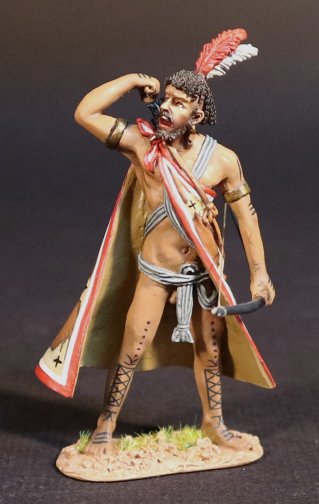
NKE-20A
THE ANCIENTS,
NEW KINGDOM EGYPTIANS,
THE BATTLE OF KADESH 1274BC,
LIBYAN MERCENARY
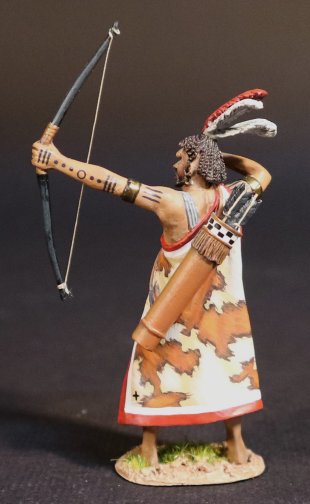
NKE-20B
THE ANCIENTS,
NEW KINGDOM EGYPTIANS,
THE BATTLE OF KADESH 1274BC,
LIBYAN MERCENARY
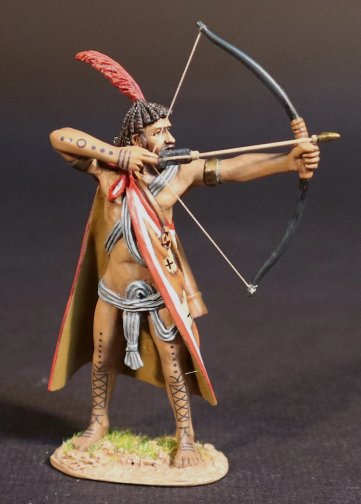
NKE-20C
THE ANCIENTS,
NEW KINGDOM EGYPTIANS,
THE BATTLE OF KADESH 1274BC,
LIBYAN MERCENARY
THE HITTITES
Between the 15th and 13th centuries BC, the Hittites were one of the dominant powers of the near east, and clashed with the other main three powers, Egypt, the middle Assyrians and the empire of Mitanni.
The Hittite prosperity was mostly dependent on control of the trade routes and natural metal resources.
Because of the importance of northern Syria to the vital routes linking the Cilician gates with Mesopotamia, defence of this area was crucial, and was challenged by the Egyptian expansion under Pharaoh Ramesses II.
The Battle of Kadesh took place in the 13th century BC between the Egyptian Empire led by pharaoh Ramesses II and the Hittite Empire led by king Muwatalli II.
Their armies engaged each other at the Orontes river, just upstream of lake Homs and near the archaeological site of the fortified city of Kadesh.
It is generally dated to May 1274 BC, as accounted by Egyptian chronology, and is the earliest pitched battle in recorded history for which details of tactics and formations are known.
It is believed to be the largest battle ever fought involving chariots, numbering a total of around 6,000.

Kadesh remains a popular battle with historians because of the detailed pictorial representations left by Rameses II on the walls of temples at Thebes, Karnak, Luxor, Agydos and Abu Simbel.
As Rameses army marched up from the south, the Hittite king Muwatallis II, launched his attack by despatching 2,500 chariots in four bodies across the Orontes via a ford just below the fortified city of Kadesh.
The Egyptian records describe how these chariots cut through the army of Ra in its middle, while they were marching without knowing and without being drawn up for battle, which broke the army and caused panic. The fleeing army fell into confusion against the army of Amun the second Egyptian army to the north, which also fell into confusion and flight.
The Hittites followed up this initial attack and finally encircled the Egyptian camp. Rameses’ personal leadership and tactical dexterity in the swirling chariot battle saved him at the decisive moment, and he was able to snatch victory from the jaws of defeat.
The outcome of the Battle of Kadesh is uncertain, although the timely arrival of Egyptian reinforcements prevented a total Hittite victory, the Egyptians did force the Hittites to take refuge in the fortress city of Kadesh, but their own losses prevented them from sustaining a siege.
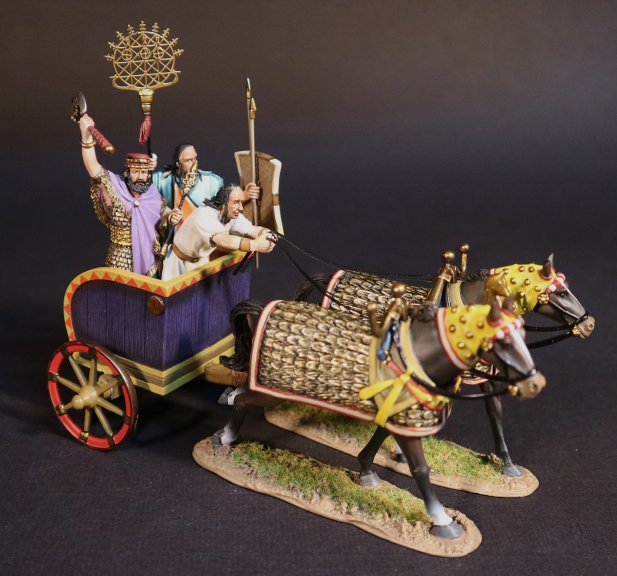
HITT-01
THE ANCIENTS,
NEW KINGDOM EGYPTIANS,
THE BATTLE OF KADESH 1274BC,
HITTITE WAR CHARIOT,
KING MUWATALLI II, WITH HITTITE SUN DISK STANDARD
Muwatalli II was a king of the Hittite Empire. He was the eldest son of Mursili II and Queen Gassulawiya. He is best known for relocating the Hittite capital to Tarhuntassa, appointing his brother Hattusili as governor in Hattusa, and fighting Ramesses II in the Battle of Kadesh.
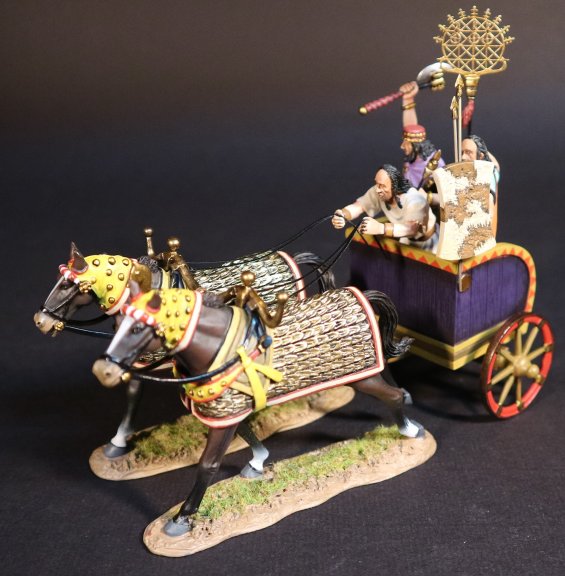
**PLEASE CONTACT YOUR LOCAL DEALER FOR FURTHER INFORMATION**
The New Kingdom, is the period in ancient Egyptian history between the sixteenth century BC and the eleventh century BC. It was Egypt’s most prosperous time and marked the peak of its power.
It is also known as the “Ramesside period”, named after the eleven pharaohs who took the name Ramesses, after Ramesses I, the founder of the nineteenth Dynasty.

The Egyptians were experts in the use of massed archery.
The infantry was usually divided into two. The archers by now were equipped with the newer composite bow, and would be deployed in linear formation. When faced with lightly protected troops such as the Libyans, massed volleys alone were frequently sufficient to effect the necessary level of destruction.
Archers were an important part of an Egyptian army. They were not generally expected to close with the enemy which is evident by their general lack of body armour.
Against more heavily armed and protected infantry the archers would be employed to deliver heavy covering fire for the close combat infantry known as Nakhtu-aa or “the strong arm boys”.
These would advance rapidly, discharging their spears in the process before closing with an enemy already softened up by the supporting fire of the archers, and attacking with their bronze khopesh swords or long mace axes.

NKE-06A
THE ANCIENTS,
NEW KINGDOM EGYPTIANS,
THE BATTLE OF KADESH 1274BC,
EGYPTIAN STANDARD BEARER

NKE-06B
THE ANCIENTS,
NEW KINGDOM EGYPTIANS,
THE BATTLE OF KADESH 1274BC,
EGYPTIAN STANDARD BEARER
NUBIAN AND LIBYAN MERCENARIES
During the 20th Dynasty Egyptian power declined, and Egypt itself was beset with Libyan incursions and attempted invasions by the sea peoples.

The Libyans were originally composed of two peoples namely the Tehenu and the Temehu. These were later joined by tribes called the Kehek and Meshwesh, the latter being the most notable of all the Libyan tribes.
These peoples never did well against the Egyptians due mainly to their lack of chariots, and were no match for the Egyptians at this time.
The first Libyan War in 1193 BC, Pharaoh Rameses III of the 20th Dynasty fought a mixed army of Libyans and Sea Peoples, which were led by King Themer. The invaders were beaten back with over 12,000 killed and 1,000 taken prisoner.
Libyans wore animal hide cloaks and had dyed ostrich feathers in their hair.
Many Libyans who raided Egypt during the reigns of Merenptah and Ramesses III were captured and impressed as auxiliary troops in the Egyptian army. Ramesses III’s battle scenes illustrate many Libyans armed with bows, as well as long slashing swords traded from the sea peoples.

NKE-20
THE ANCIENTS,
NEW KINGDOM EGYPTIANS,
THE BATTLE OF KADESH 1274BC,
LIBYAN MERCENARIES

NKE-20A
THE ANCIENTS,
NEW KINGDOM EGYPTIANS,
THE BATTLE OF KADESH 1274BC,
LIBYAN MERCENARY

NKE-20B
THE ANCIENTS,
NEW KINGDOM EGYPTIANS,
THE BATTLE OF KADESH 1274BC,
LIBYAN MERCENARY

NKE-20C
THE ANCIENTS,
NEW KINGDOM EGYPTIANS,
THE BATTLE OF KADESH 1274BC,
LIBYAN MERCENARY
THE HITTITES
Between the 15th and 13th centuries BC, the Hittites were one of the dominant powers of the near east, and clashed with the other main three powers, Egypt, the middle Assyrians and the empire of Mitanni.
The Hittite prosperity was mostly dependent on control of the trade routes and natural metal resources.
Because of the importance of northern Syria to the vital routes linking the Cilician gates with Mesopotamia, defence of this area was crucial, and was challenged by the Egyptian expansion under Pharaoh Ramesses II.
The Battle of Kadesh took place in the 13th century BC between the Egyptian Empire led by pharaoh Ramesses II and the Hittite Empire led by king Muwatalli II.
Their armies engaged each other at the Orontes river, just upstream of lake Homs and near the archaeological site of the fortified city of Kadesh.
It is generally dated to May 1274 BC, as accounted by Egyptian chronology, and is the earliest pitched battle in recorded history for which details of tactics and formations are known.
It is believed to be the largest battle ever fought involving chariots, numbering a total of around 6,000.

Kadesh remains a popular battle with historians because of the detailed pictorial representations left by Rameses II on the walls of temples at Thebes, Karnak, Luxor, Agydos and Abu Simbel.
As Rameses army marched up from the south, the Hittite king Muwatallis II, launched his attack by despatching 2,500 chariots in four bodies across the Orontes via a ford just below the fortified city of Kadesh.
The Egyptian records describe how these chariots cut through the army of Ra in its middle, while they were marching without knowing and without being drawn up for battle, which broke the army and caused panic. The fleeing army fell into confusion against the army of Amun the second Egyptian army to the north, which also fell into confusion and flight.
The Hittites followed up this initial attack and finally encircled the Egyptian camp. Rameses’ personal leadership and tactical dexterity in the swirling chariot battle saved him at the decisive moment, and he was able to snatch victory from the jaws of defeat.
The outcome of the Battle of Kadesh is uncertain, although the timely arrival of Egyptian reinforcements prevented a total Hittite victory, the Egyptians did force the Hittites to take refuge in the fortress city of Kadesh, but their own losses prevented them from sustaining a siege.

HITT-01
THE ANCIENTS,
NEW KINGDOM EGYPTIANS,
THE BATTLE OF KADESH 1274BC,
HITTITE WAR CHARIOT,
KING MUWATALLI II, WITH HITTITE SUN DISK STANDARD
Muwatalli II was a king of the Hittite Empire. He was the eldest son of Mursili II and Queen Gassulawiya. He is best known for relocating the Hittite capital to Tarhuntassa, appointing his brother Hattusili as governor in Hattusa, and fighting Ramesses II in the Battle of Kadesh.

**PLEASE CONTACT YOUR LOCAL DEALER FOR FURTHER INFORMATION**

